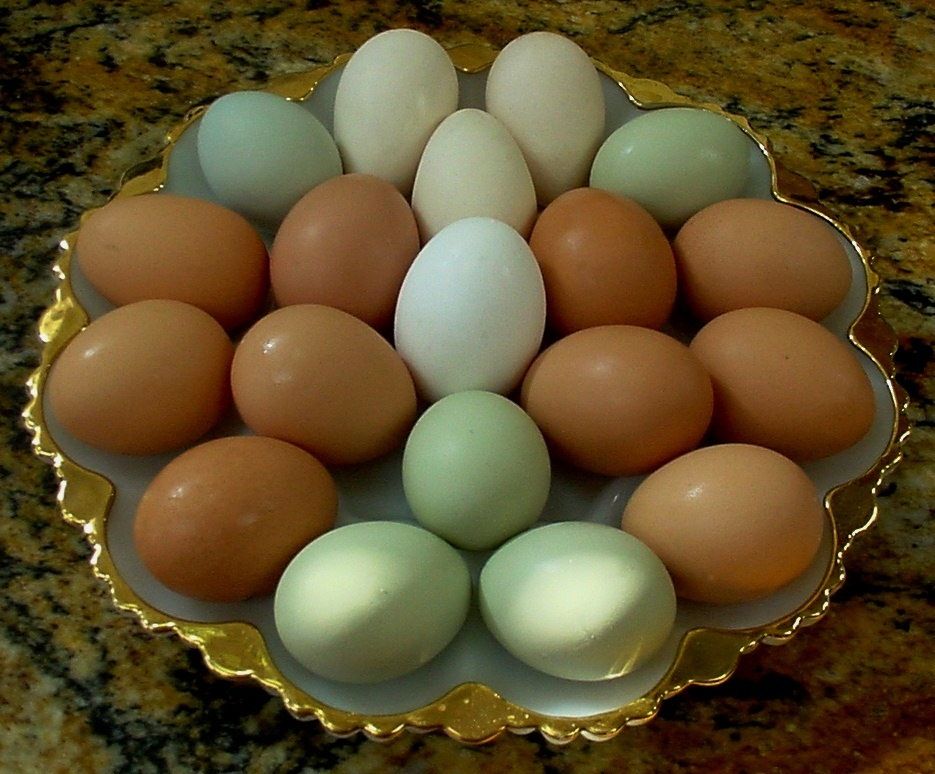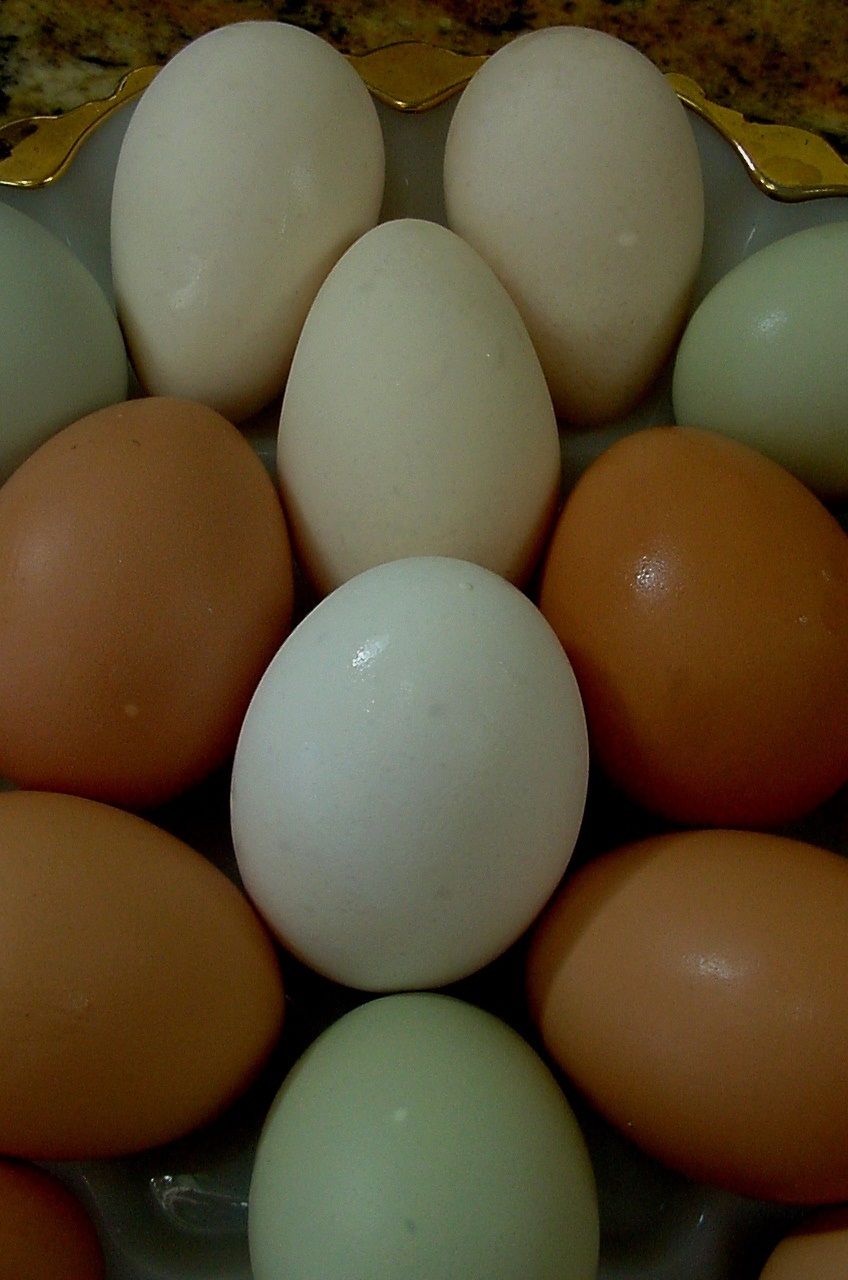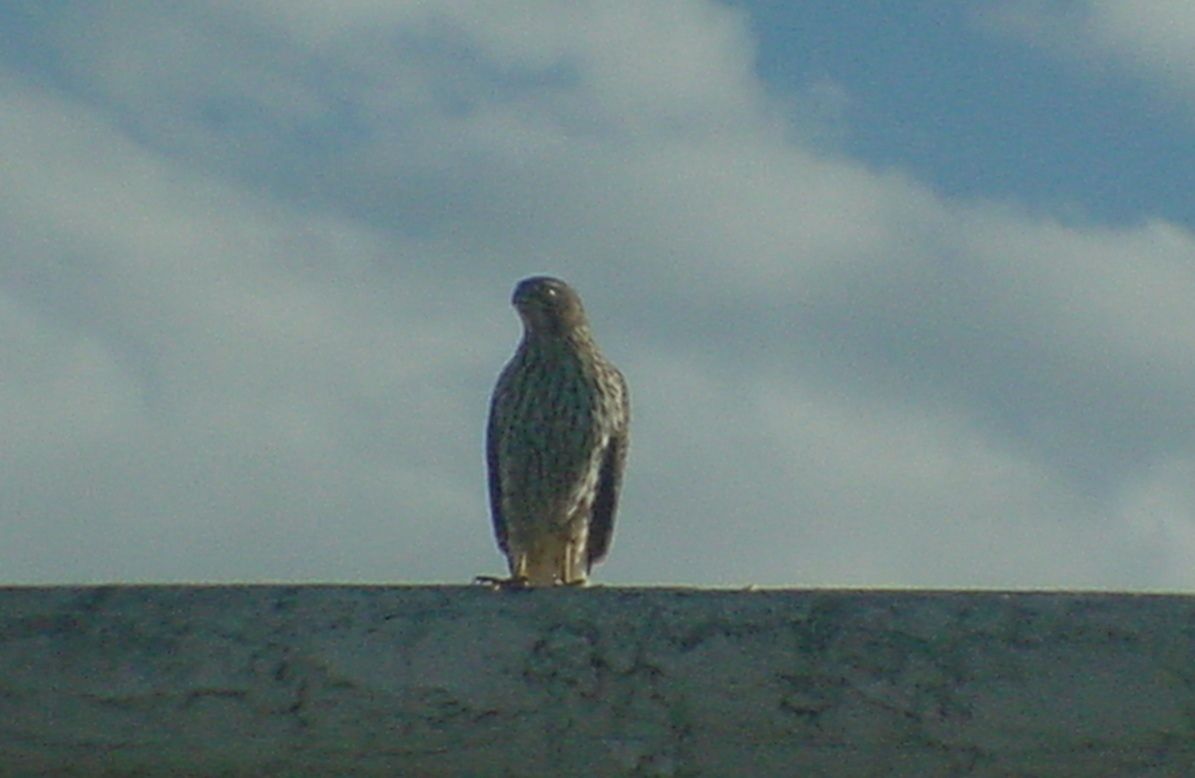Egg Colors & More
Eggs, Egg Color, Egg Shape & Size
We have all probably read about the egg shell colors the various breeds lay but, trying to figure out what shade of brown, for example, that some breeds lay compared to others, is another story. You just cannot be that fussy. Since 5 of my 7 darlings have been laying for a while, I qualify myself as an expert on the breeds I own, at least my chickens and, some likely vary within the breed, depending on the purity of the standard. Note: My findings are based on one chicken and two of the RIRs.
AUSTRALORP - Slightly darker Medium Brown than the RIRs and elongated. Size large.
RHODE ISLAND RED - Slightly lighter Medium Brown than the Australorp, plump and rather rounded. Size large.
WHITE CRESTED BLUE POLISH - Ivory Tinted, extremely elongated, even more than the Australorp. Size large.
EASTER EGGER - Medium to Light Olive Green and, plump. Size medium.
Note: Contrary to everything I have read about and been told about regarding the color of the White Crested Blue Polish eggs, they are not white, not a whiter white than the Leghorn, not white at all. They resemble more of a pale beige than white. See for yourself on the following photographs:
The green eggs are rather washed out but, you can clearly see the difference between the sole commercial Leghorn and Haley's three tinted eggs at the far end. The brown eggs are hard to differenciate since most came from the fridge and developed a bit of moisture on the shell. I couldn't begin to tell you which are Australorp eggs and which are RIRs; however, in person, it is obvious from color as well as shape.


Birds of Prey
Ever seen a hawk in surberbia? How about right outside your kitchen window, barely 12' or 15' away, just sitting in your fig tree. Well, I have and I did a few days ago (a few days before Christmas 2011). It was facing away from me so I stood admiring its beautiful back and long feathered tail wondering what gorgeous bird it was. Then it turned around, on the same fig tree branch, and I quickly ran for my camera. As I returned, it was ascending to the neighbor's roof. It landed for less than one second and then was gone in an instant. Miraculously, I managed to photograph it, not the best photograph but, I got it. It was no doubt spying the chickens about 6' away and devising its plan of attack when I interrupted. I likely saved my darlings from a horrific ordeal. They had no idea that the hawk was even in the tree. They were pecking at food on the ground facing away from the hawk. I shudder to think that in another instant, maybe a minute, I might have seen it grab one of my chickens and ascend with it screetching loudly in terror, feathers flying everywhere and, the rucus of the rest of them as they go mad, unable to do anything to save their friend and coop-mate.
The fig tree and a nearby pomegranate tree were their favored shelters all Spring and Summer. I moved their food and water nearby for convenience. However, the leaves had all fallen from both trees in the last couple of weeks, but for a few shriveled crumpled brown ones fallen off but not to the ground. The pomegranate leaves were likewise all yellowed and sparce. There was clearly no shelter on either tree anymore.
I promptly returned their feed and water to the back yard, under an orange-lemon tree, their initial hangout. The citrus offer shelter year round and the more time they spend near and under shelter, the better, especially when they are at their most vulnerable.

MORE TO COME. Thanks for reading so far.
Eggs, Egg Color, Egg Shape & Size
We have all probably read about the egg shell colors the various breeds lay but, trying to figure out what shade of brown, for example, that some breeds lay compared to others, is another story. You just cannot be that fussy. Since 5 of my 7 darlings have been laying for a while, I qualify myself as an expert on the breeds I own, at least my chickens and, some likely vary within the breed, depending on the purity of the standard. Note: My findings are based on one chicken and two of the RIRs.
AUSTRALORP - Slightly darker Medium Brown than the RIRs and elongated. Size large.
RHODE ISLAND RED - Slightly lighter Medium Brown than the Australorp, plump and rather rounded. Size large.
WHITE CRESTED BLUE POLISH - Ivory Tinted, extremely elongated, even more than the Australorp. Size large.
EASTER EGGER - Medium to Light Olive Green and, plump. Size medium.
Note: Contrary to everything I have read about and been told about regarding the color of the White Crested Blue Polish eggs, they are not white, not a whiter white than the Leghorn, not white at all. They resemble more of a pale beige than white. See for yourself on the following photographs:
The green eggs are rather washed out but, you can clearly see the difference between the sole commercial Leghorn and Haley's three tinted eggs at the far end. The brown eggs are hard to differenciate since most came from the fridge and developed a bit of moisture on the shell. I couldn't begin to tell you which are Australorp eggs and which are RIRs; however, in person, it is obvious from color as well as shape.


Birds of Prey
Ever seen a hawk in surberbia? How about right outside your kitchen window, barely 12' or 15' away, just sitting in your fig tree. Well, I have and I did a few days ago (a few days before Christmas 2011). It was facing away from me so I stood admiring its beautiful back and long feathered tail wondering what gorgeous bird it was. Then it turned around, on the same fig tree branch, and I quickly ran for my camera. As I returned, it was ascending to the neighbor's roof. It landed for less than one second and then was gone in an instant. Miraculously, I managed to photograph it, not the best photograph but, I got it. It was no doubt spying the chickens about 6' away and devising its plan of attack when I interrupted. I likely saved my darlings from a horrific ordeal. They had no idea that the hawk was even in the tree. They were pecking at food on the ground facing away from the hawk. I shudder to think that in another instant, maybe a minute, I might have seen it grab one of my chickens and ascend with it screetching loudly in terror, feathers flying everywhere and, the rucus of the rest of them as they go mad, unable to do anything to save their friend and coop-mate.
The fig tree and a nearby pomegranate tree were their favored shelters all Spring and Summer. I moved their food and water nearby for convenience. However, the leaves had all fallen from both trees in the last couple of weeks, but for a few shriveled crumpled brown ones fallen off but not to the ground. The pomegranate leaves were likewise all yellowed and sparce. There was clearly no shelter on either tree anymore.
I promptly returned their feed and water to the back yard, under an orange-lemon tree, their initial hangout. The citrus offer shelter year round and the more time they spend near and under shelter, the better, especially when they are at their most vulnerable.

MORE TO COME. Thanks for reading so far.
